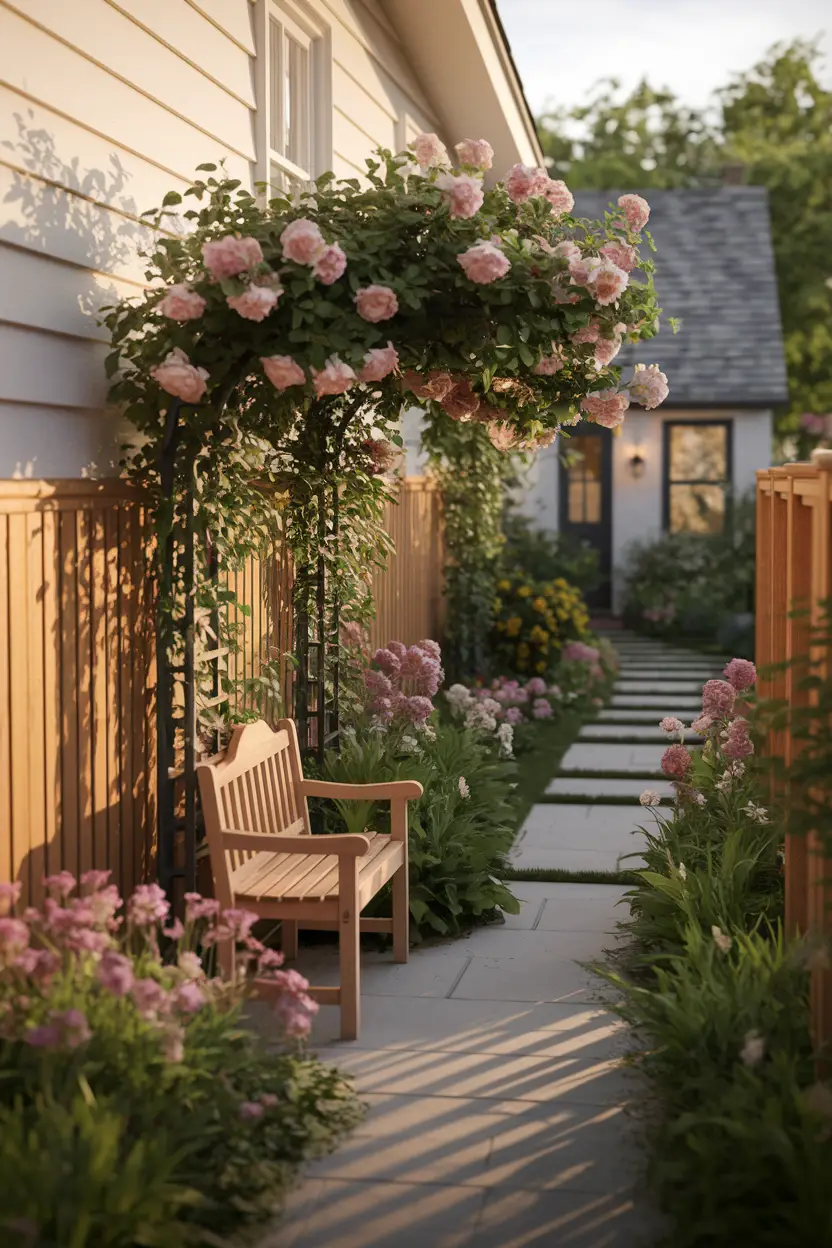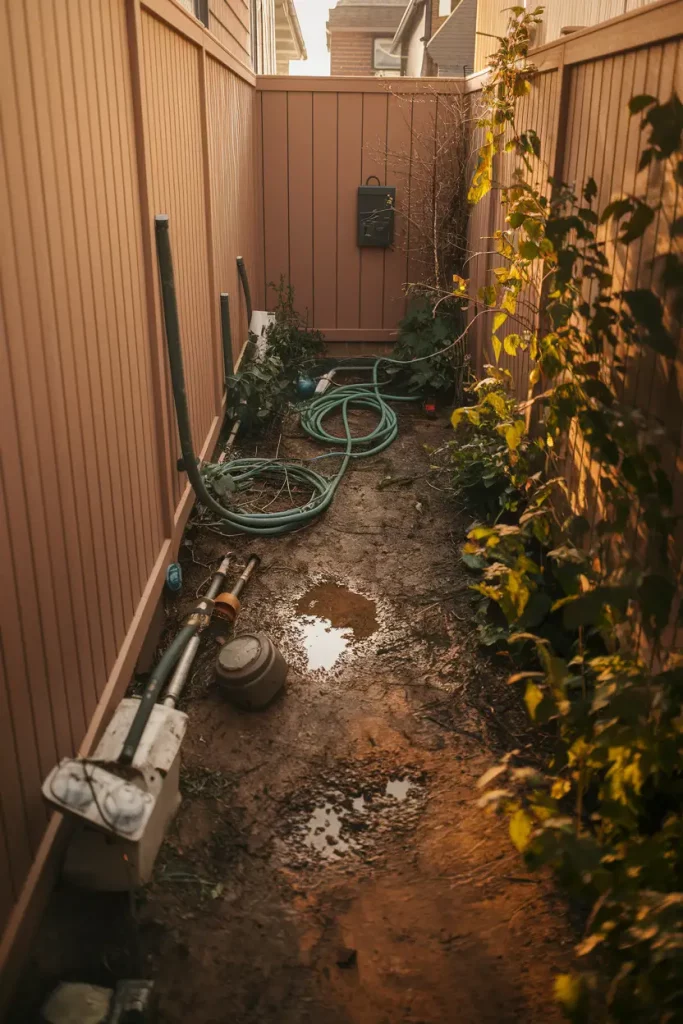Your side yard is staring at you again, isn’t it? That awkward strip of land between your house and the neighbor’s fence that somehow always looks like the forgotten stepchild of your property. I get it—most of us focus all our landscaping energy on the front yard (curb appeal, right?) and the backyard (where the fun happens), leaving that poor side yard to fend for itself.
But here’s the thing: your side yard has serious potential. You just need to know how to unlock it without breaking the bank. After years of helping friends transform their neglected side spaces and tackling my own stubborn strip of earth, I’ve discovered that creativity beats cash every single time.
Understanding Your Side Yard’s Unique Challenges
The Reality Check
Side yards are tricky beasts. They’re usually narrow, often shaded, and let’s be honest—they can feel like landscaping’s equivalent of that junk drawer in your kitchen. Everyone has one, nobody knows what to do with it, and it somehow accumulates random stuff over time.
Most side yards deal with at least one of these issues:
- Limited sunlight due to proximity to structures
- Narrow width that restricts plant and design choices
- Drainage problems from roof runoff
- Foot traffic from utilities or general access needs
- Neglect because they’re out of sight, out of mind
The good news? These challenges actually make side yards perfect for budget landscaping. You’re working with a smaller space, which means less material and less money. Plus, since they’re usually private areas, you can experiment without worrying about what the whole neighborhood thinks.
Setting Realistic Expectations
Before you start dreaming of magazine-worthy transformations, let’s get real about what “low-cost” means. I’m talking about solutions that won’t require a second mortgage or a landscape contractor’s phone number. Most of these ideas will cost you anywhere from free (my favorite price point) to under $200 per project.
Planning Your Side Yard Transformation
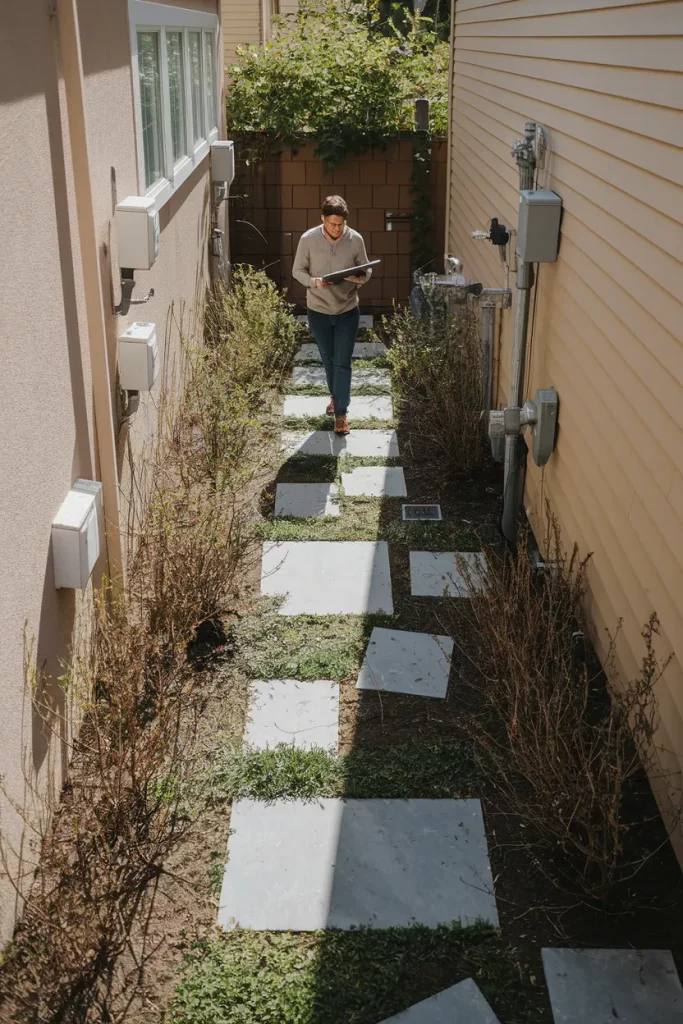
Assess What You’re Working With
Walk your side yard with fresh eyes. What’s already there that you can work with? That scraggly shrub might just need some TLC rather than replacement. Those random pavers scattered around could become a pathway with a little creativity.
Take note of:
- Existing vegetation that’s worth keeping
- Natural drainage patterns
- Sun and shade areas throughout the day
- Utility access points you need to keep clear
- Views you want to block or enhance
Define Your Goals
What do you actually want from this space? A functional pathway? A private retreat? Extra storage? A place for the kids to play without destroying your main landscaping? Getting clear on your goals will help you prioritize which of these 25 ideas will work best for your situation.
25 Budget-Friendly Side Yard Solutions
Pathway and Access Solutions
1. DIY Stepping Stone Path
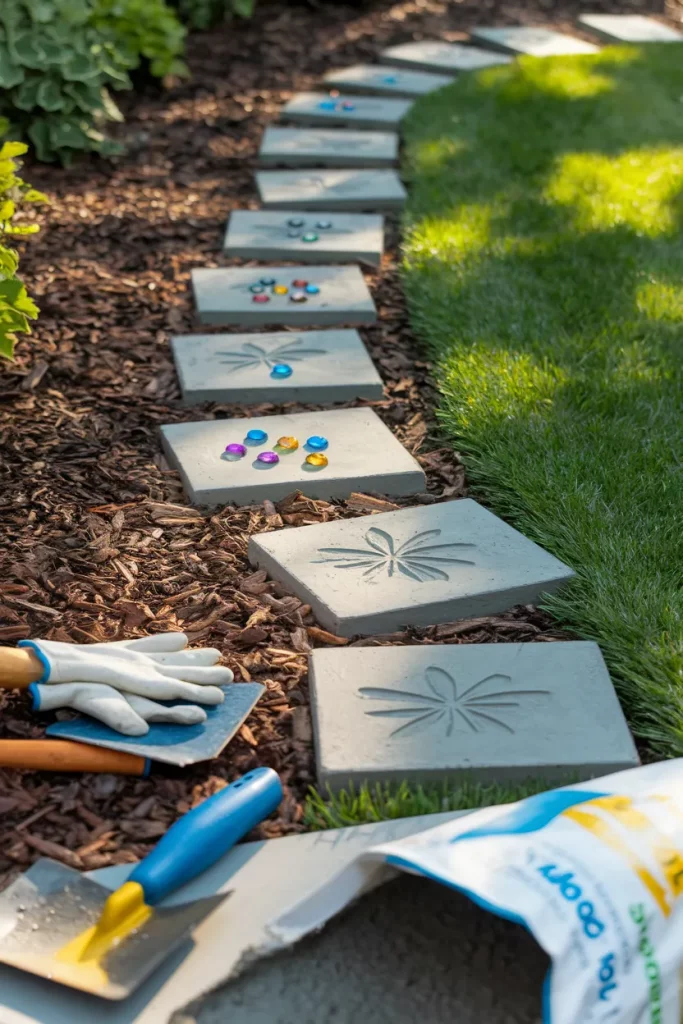
Skip the expensive flagstone and make your own stepping stones using concrete mix and pizza boxes as molds. Mix concrete with some colorant, pour it into the boxes, and press in decorative elements like glass gems or interesting leaves. Each stone costs about $3 to make versus $15+ to buy.
I learned this trick from my neighbor who got tired of muddy footprints through her side yard. She made 12 stones for under $40, and they’ve held up beautifully for three years.
Recommended: 40 Stunning Modern Farmhouse Living Room Ideas for a Cozy Retreat
2. Gravel Walkway with Recycled Borders
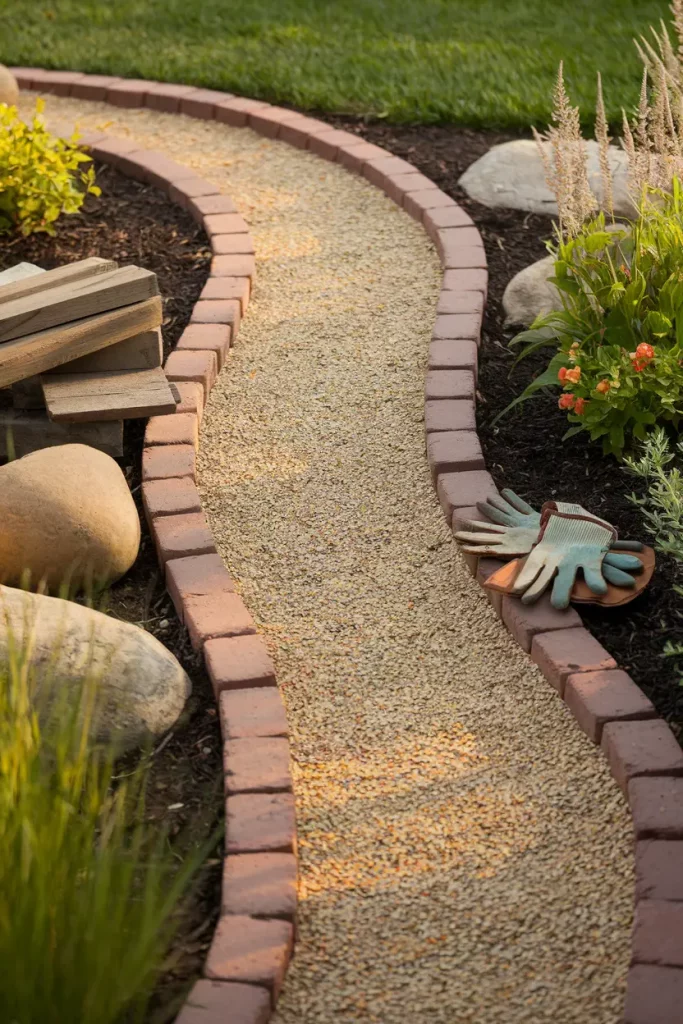
A simple gravel path can transform your side yard’s functionality. Use recycled bricks, reclaimed lumber, or even large rocks you’ve collected to create borders. The gravel itself is incredibly affordable—usually under $30 for a 50-foot path.
Pro tip: Lay down landscape fabric first. Trust me on this one. Future you will thank present you when weeds don’t take over your beautiful new path.
3. Mulched Pathway
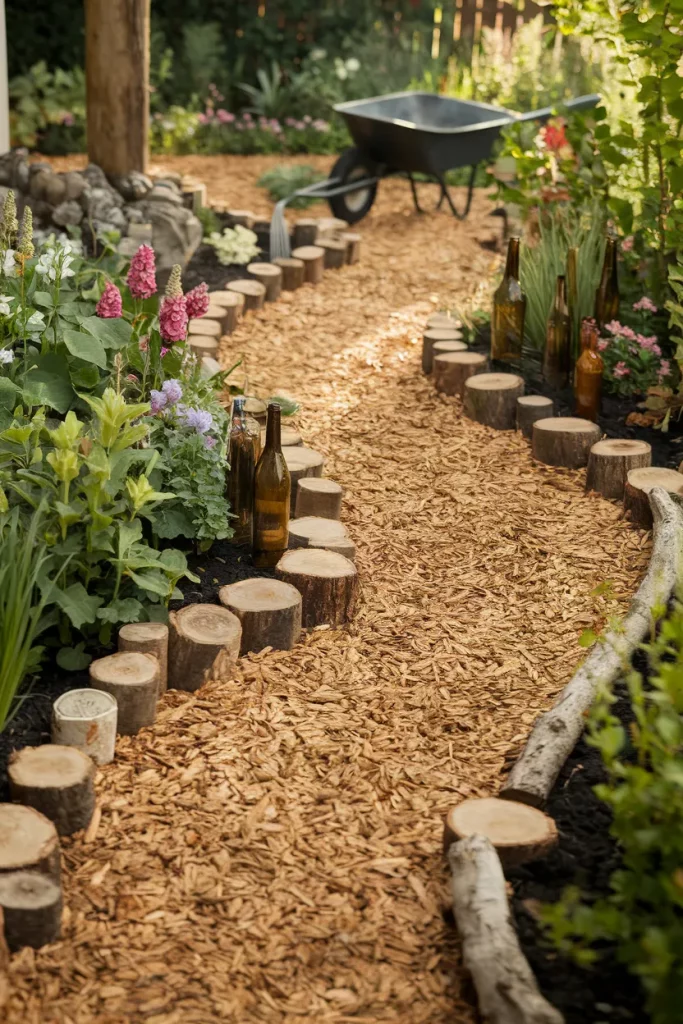
Sometimes the simplest solutions are the best. A well-defined mulch path feels intentional and polished. Use free wood chips from your local tree service (they’re usually happy to dump a load for free) and define the edges with whatever you have on hand.
Vertical Growing Solutions
4. Pallet Vertical Gardens
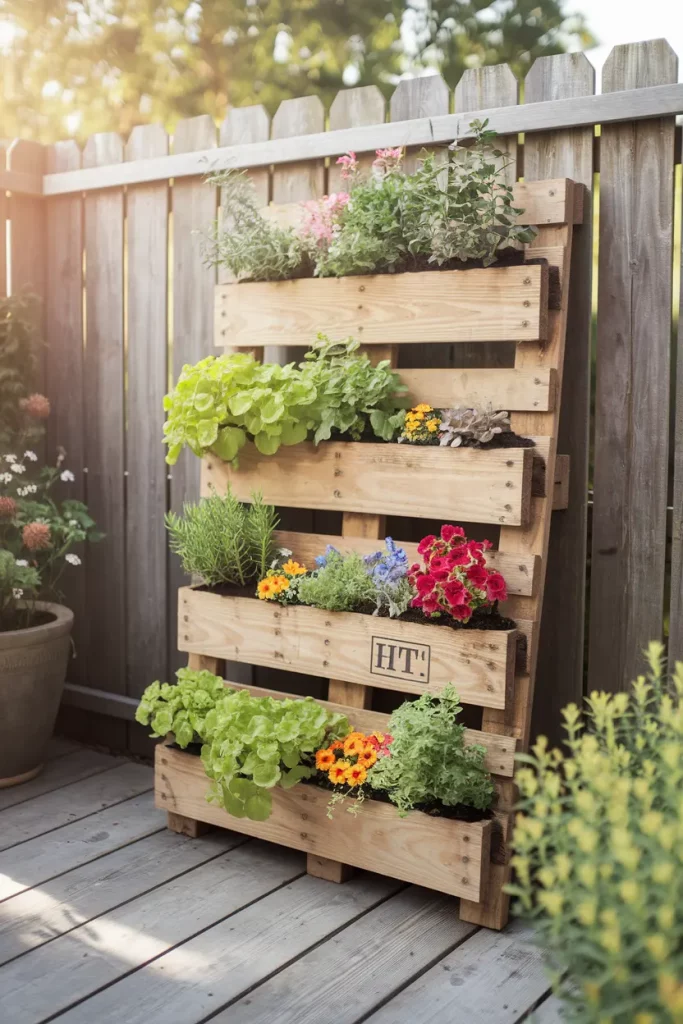
Free pallets become instant vertical planters with minimal effort. Stand them up, add landscape fabric to the back, fill with soil, and plant. Perfect for herbs, succulents, or annual flowers in narrow spaces.
Word of warning: Make sure your pallets are heat-treated (marked HT), not chemically treated. You don’t want chemicals leaching into your soil.
5. Hanging Gutter Gardens
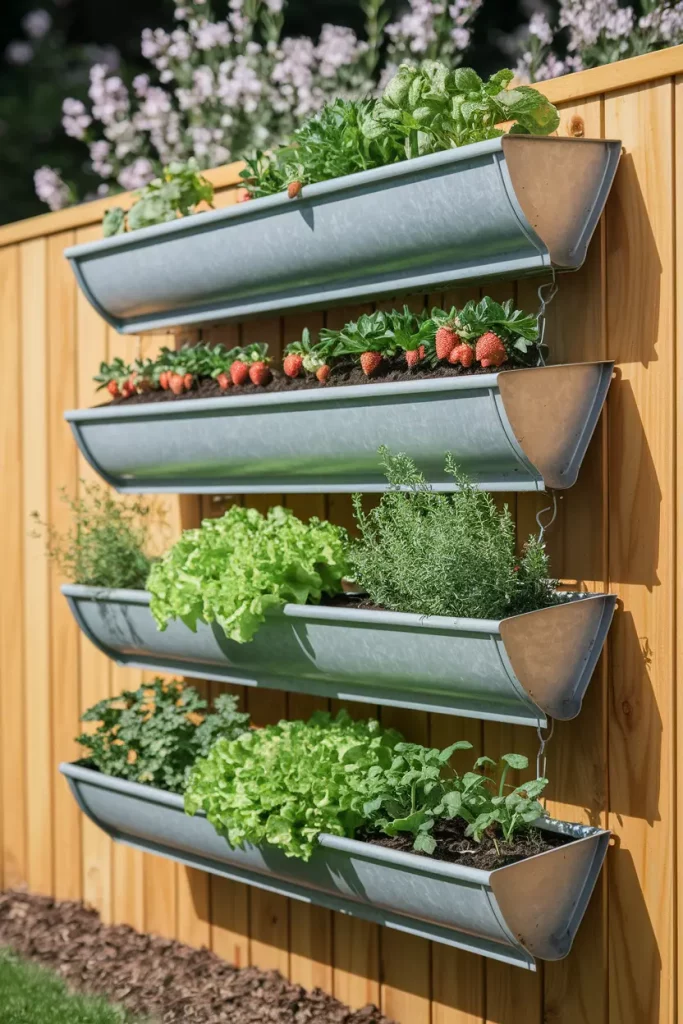
Old gutters make fantastic planters for shallow-rooted plants. Mount them at different heights on a fence or wall to create a cascade effect. Great for strawberries, lettuce, or herbs.
6. Trellis Wall with Climbing Plants
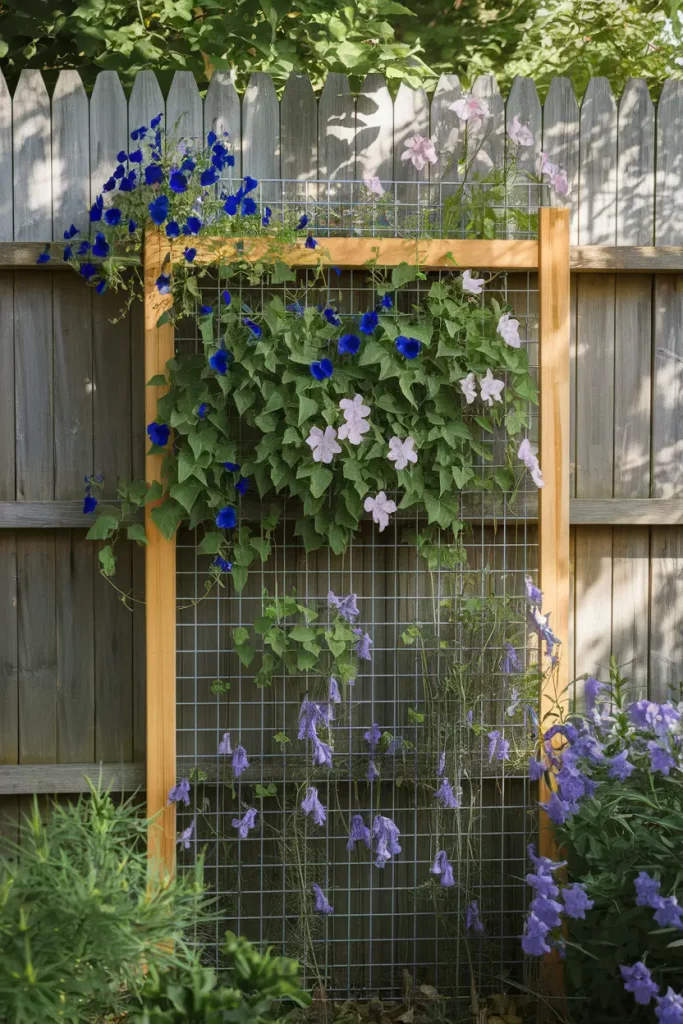
A simple trellis can hide an ugly fence or wall while adding green space. Morning glories, sweet peas, or clematis will quickly cover your structure. Build a basic trellis with 2x2s and wire mesh for under $25.
Ground Cover and Low-Maintenance Planting
7. Shade-Tolerant Ground Cover
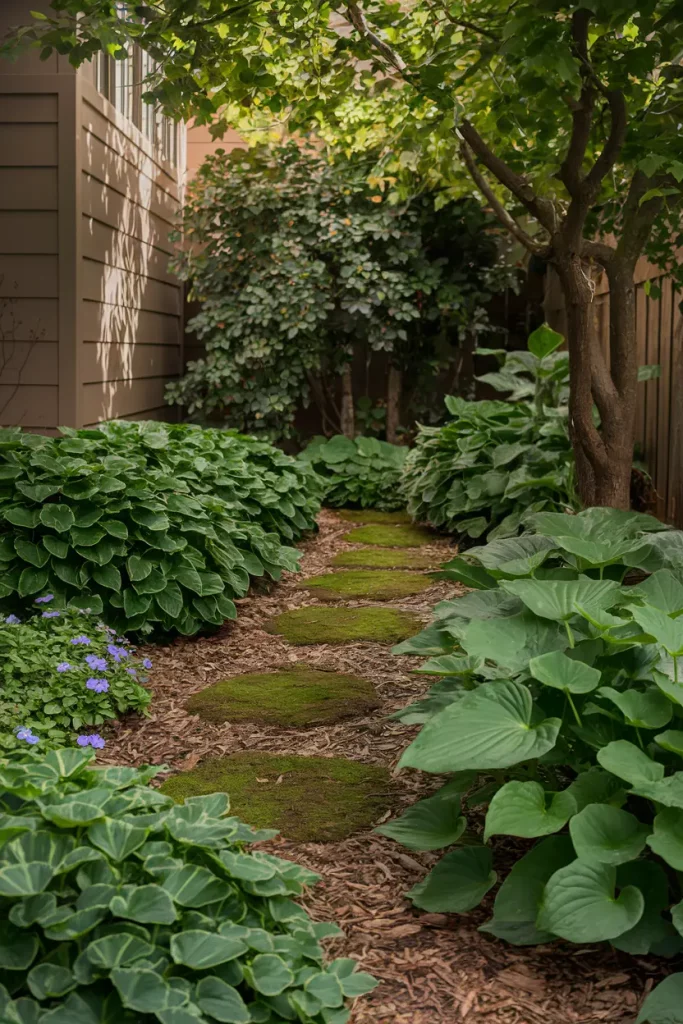
Instead of fighting with grass that won’t grow in your shady side yard, embrace shade-loving ground covers. Pachysandra, vinca, or wild ginger spread naturally and require minimal maintenance once established.
8. Native Plant Clusters
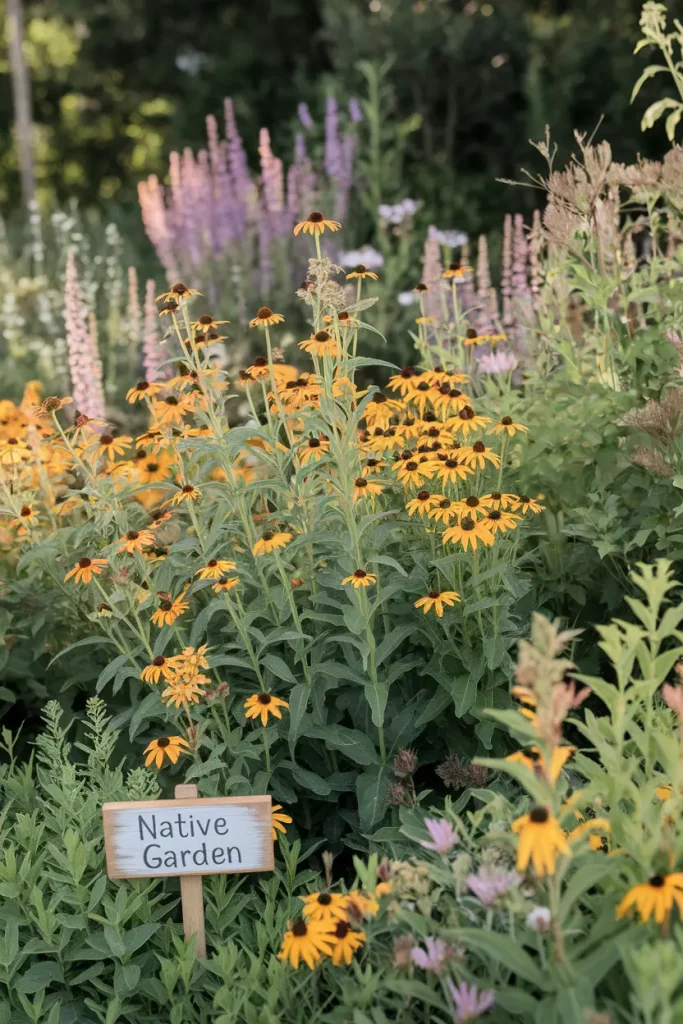
Native plants are budget-friendly because they thrive without amendments, extra water, or special care. Research what’s native to your area—you might be surprised what you can grow for free from seed or cuttings.
See also: 33 Cozy Black Boho Bedroom Ideas You’ll Love
9. Moss Garden
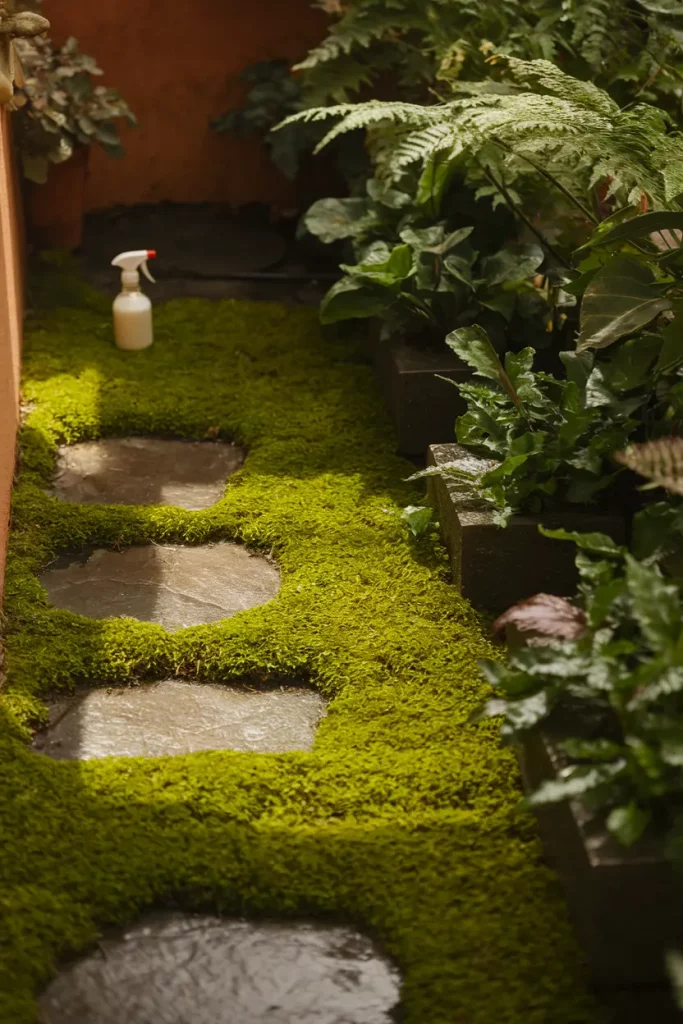
If your side yard is damp and shady, work with it instead of against it. Encourage moss growth by creating acidic conditions with diluted buttermilk or beer sprayed on surfaces. It’s weird, but it works!
Creative Container Solutions
10. Repurposed Container Garden
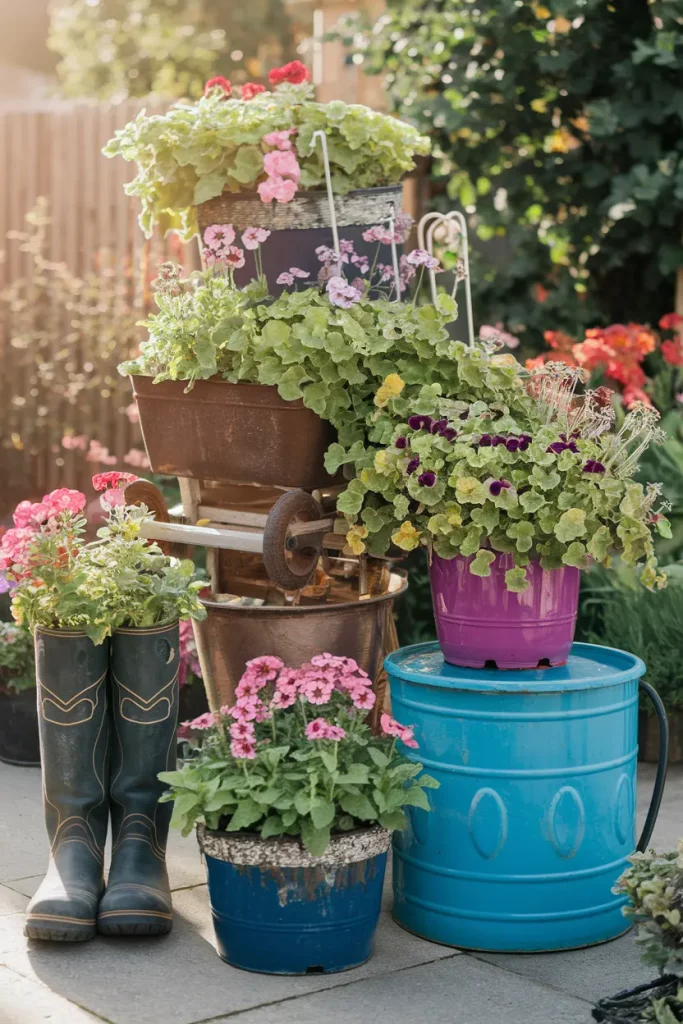
Old boots, buckets, wheelbarrows, even toilet tanks can become planters with proper drainage holes. The key is ensuring adequate drainage—nobody wants root rot ruining their budget landscaping efforts.
11. Tire Planters
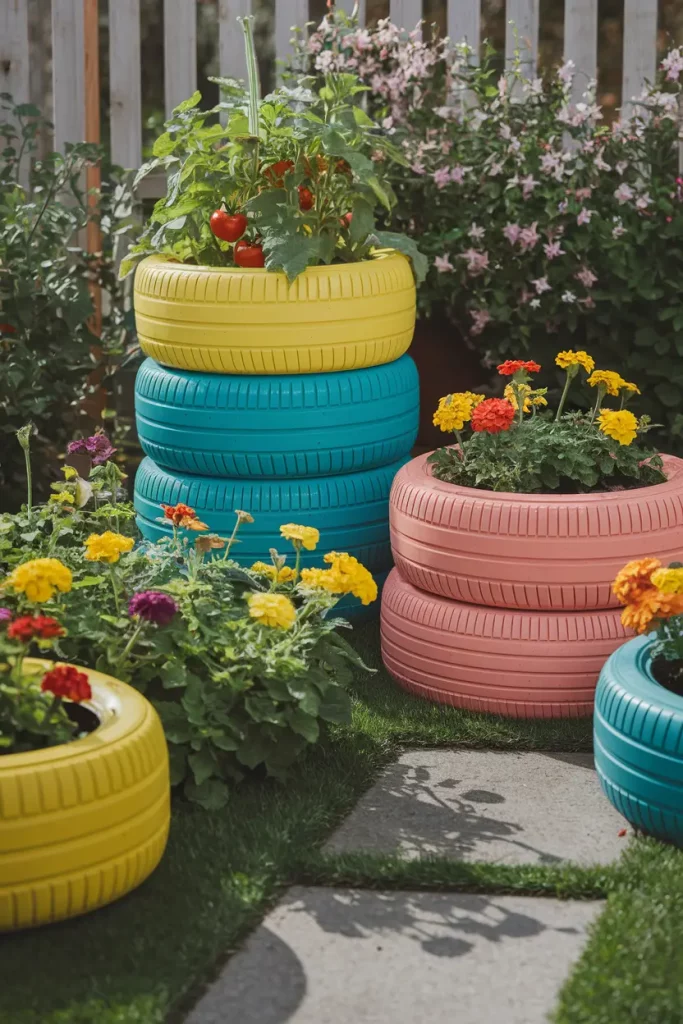
Before you roll your eyes, hear me out. Painted tires actually look pretty decent when arranged thoughtfully. Stack them for height variation, and they’re perfect for vegetables or flowers that need good drainage.
12. Concrete Block Planters
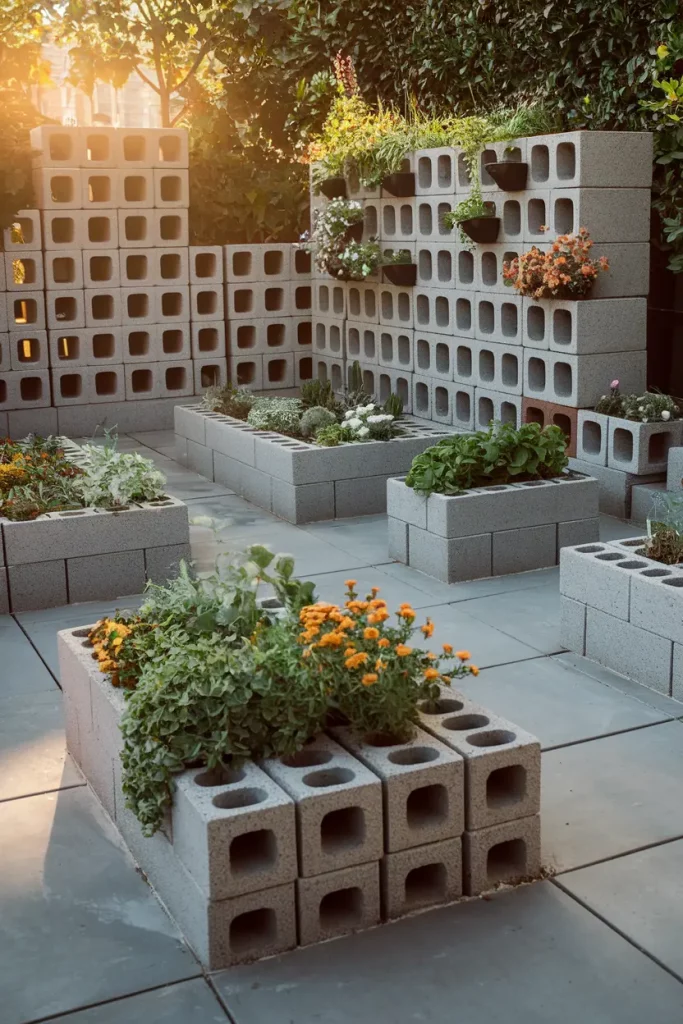
Cinder blocks aren’t just for construction. Arrange them to create raised beds, benches, or planters. Fill the holes with soil for additional planting space. Each block costs about $2 and the possibilities are endless.
Water Management and Drainage
13. Rain Garden
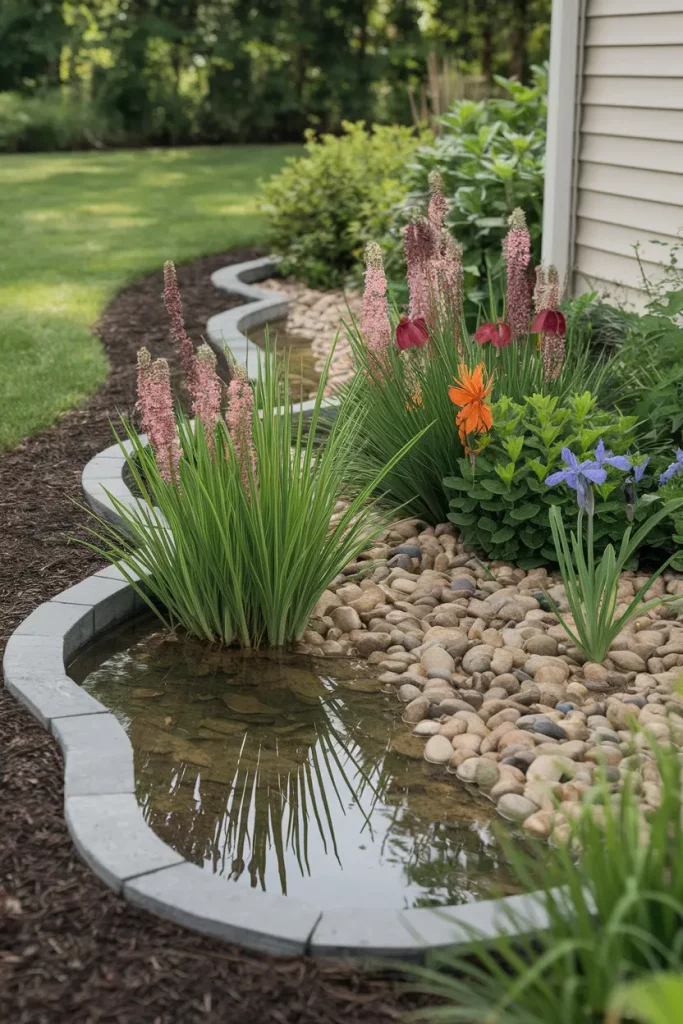
Turn that soggy spot where your downspout dumps water into a feature, not a problem. Plant water-loving perennials and you’ve solved drainage issues while adding beauty.
14. Dry Creek Bed
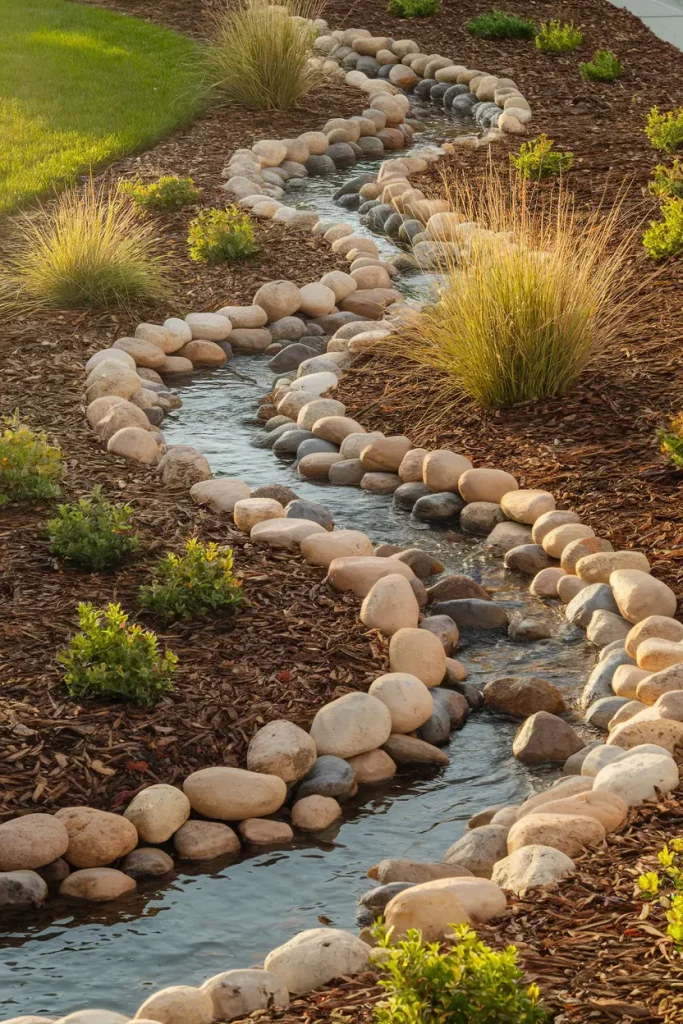
Channel rainwater runoff with a decorative dry creek bed using river rocks and strategically placed larger stones. It handles drainage while looking intentional and polished.
15. Permeable Pathway Materials
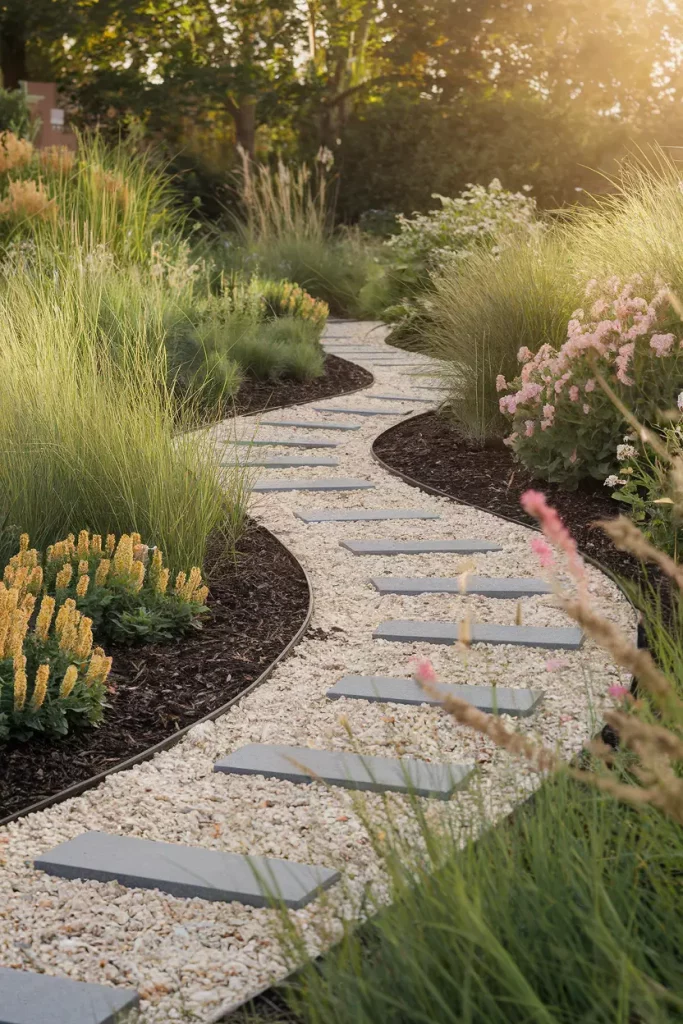
Instead of solid concrete, use permeable materials like crushed shell, decomposed granite, or permeable pavers. They handle water better and often cost less than solid alternatives.
Privacy and Screening Solutions
16. Fast-Growing Privacy Hedge
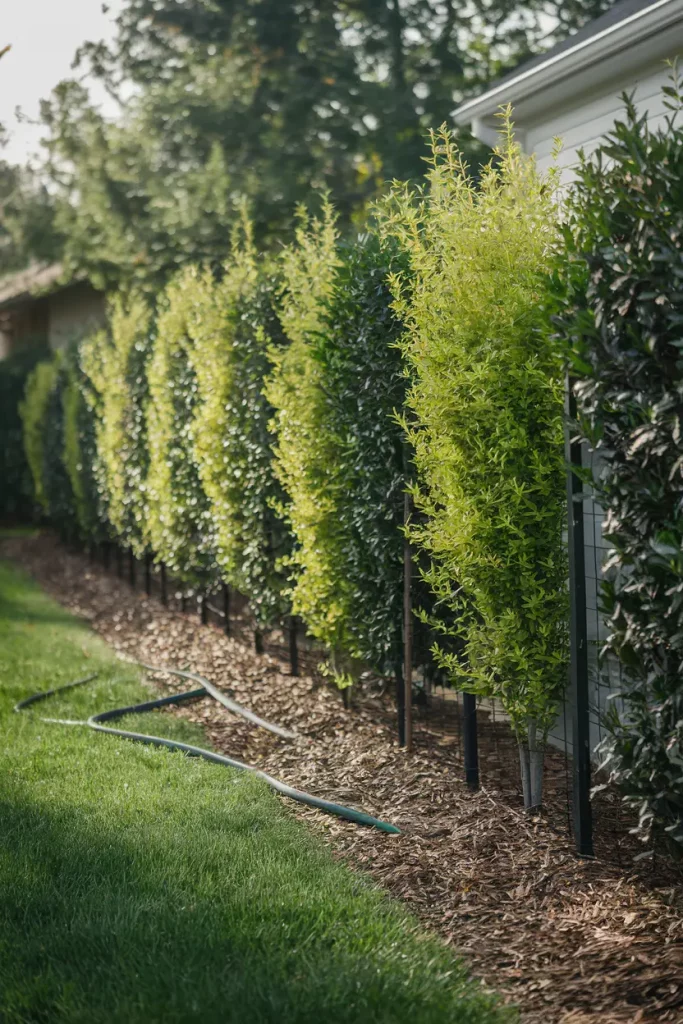
Privet, forsythia, or bamboo (be careful with this one—it spreads!) can create privacy quickly and affordably. Buy small plants and be patient—they’ll fill in faster than you think.
17. Living Privacy Screen
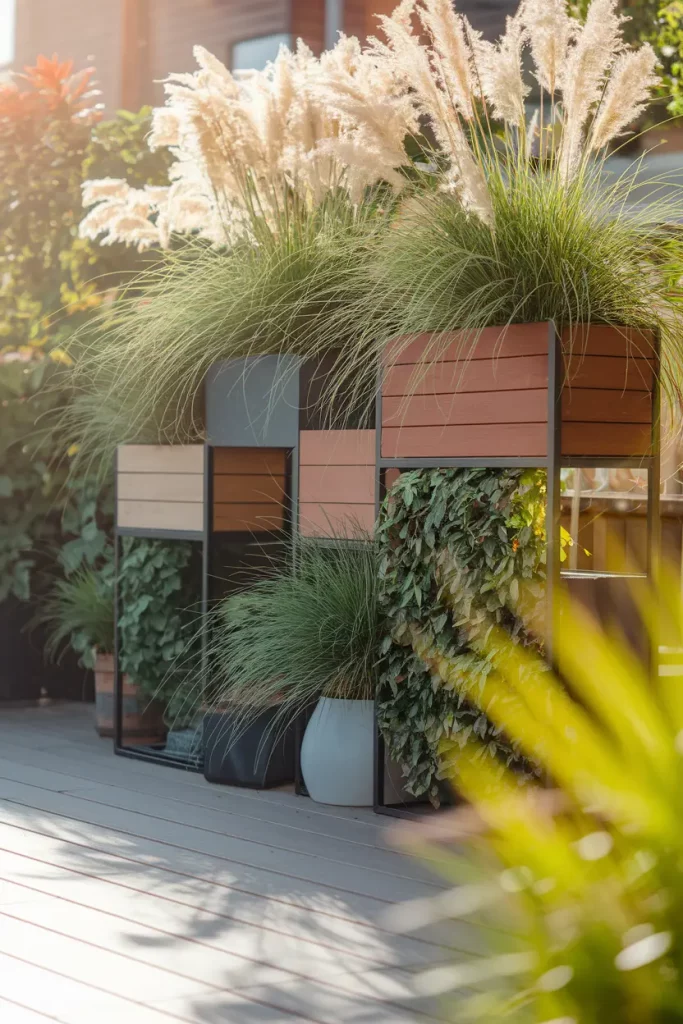
Create a living fence with tall planters filled with ornamental grasses or bamboo. Move them around as needed, and they provide instant height and privacy.
18. Fabric and Frame Screen
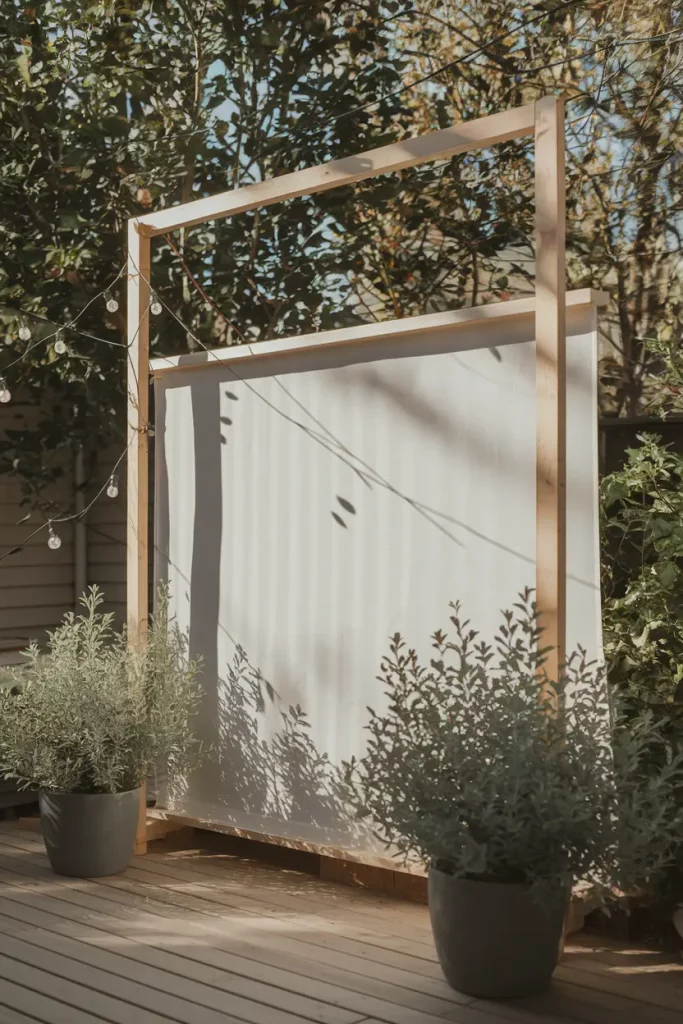
Build a simple frame with 2x4s and stretch outdoor fabric or canvas between them. Paint or stain the frame to match your home’s exterior. It’s temporary, moveable, and costs under $50.
Functional Features
19. Outdoor Storage Solutions
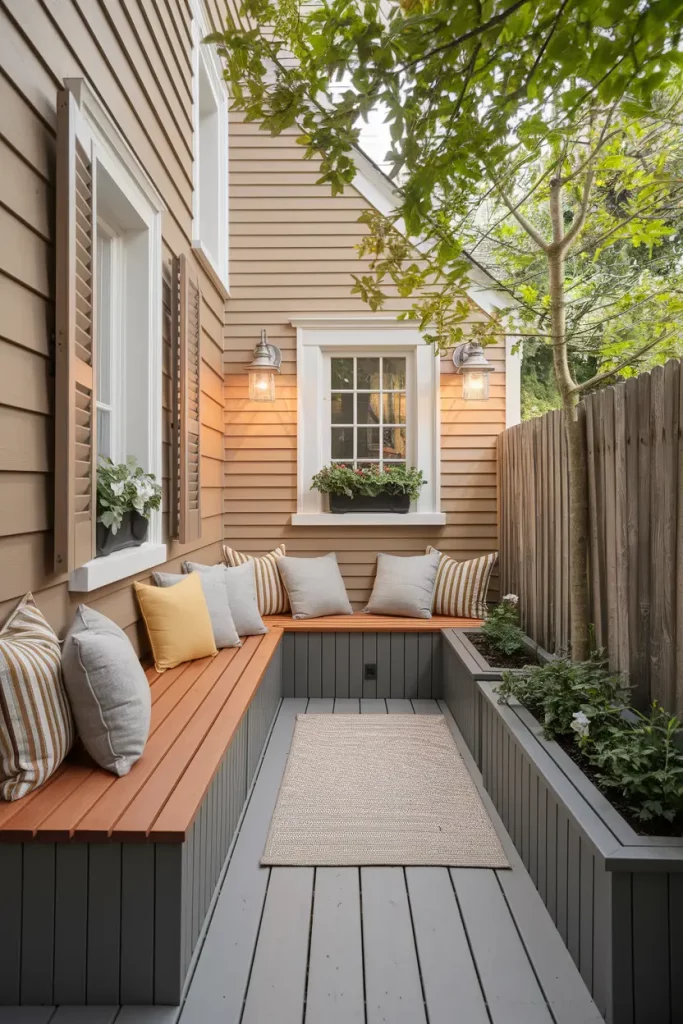
Build simple storage benches or use weatherproof containers to handle tools, hoses, or seasonal items. A storage solution that doubles as seating maximizes your narrow space.
See also: 10 Inspiring Home Office Nook Ideas for Small Spaces in 2025
20. Compost Area
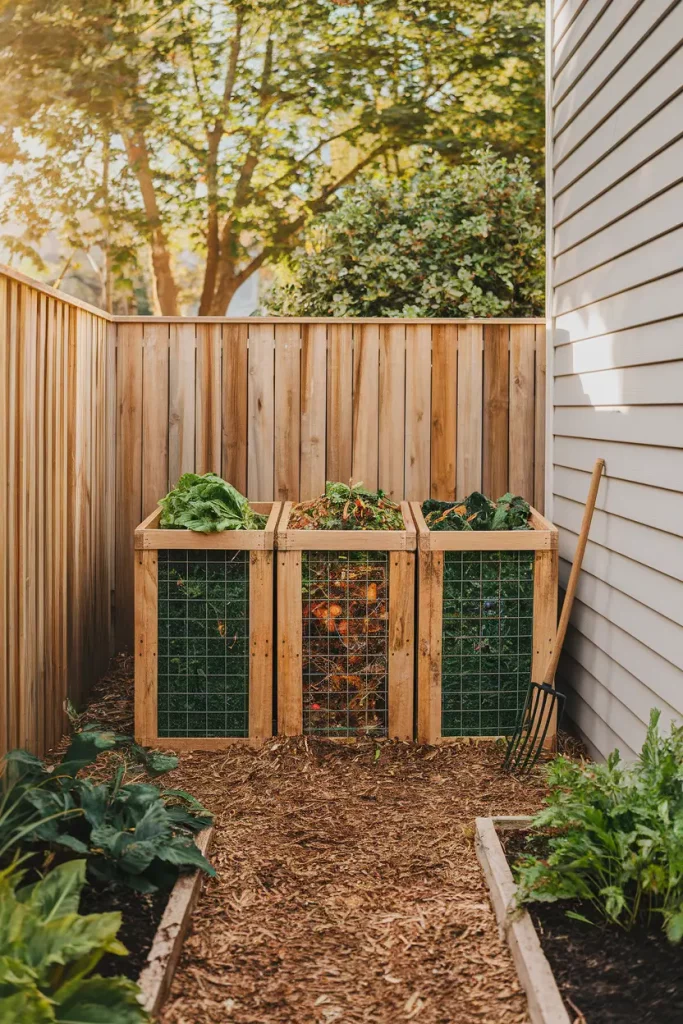
Tuck a simple compost system in your side yard’s corner. Three pallets wired together make a perfect compost bin, and you’ll generate free soil amendment for other projects.
21. Utility Disguise
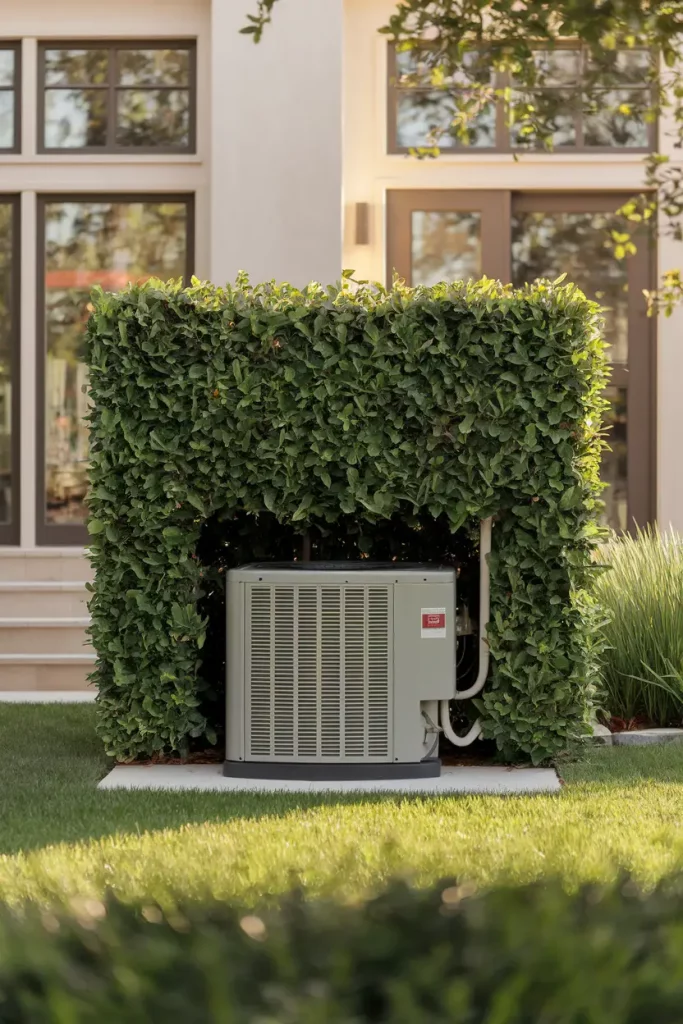
Got an ugly air conditioning unit or utility box ruining your view? Build a simple screen or plant strategic shrubs to hide it while maintaining necessary access.
Lighting and Ambiance
22. Solar Lighting
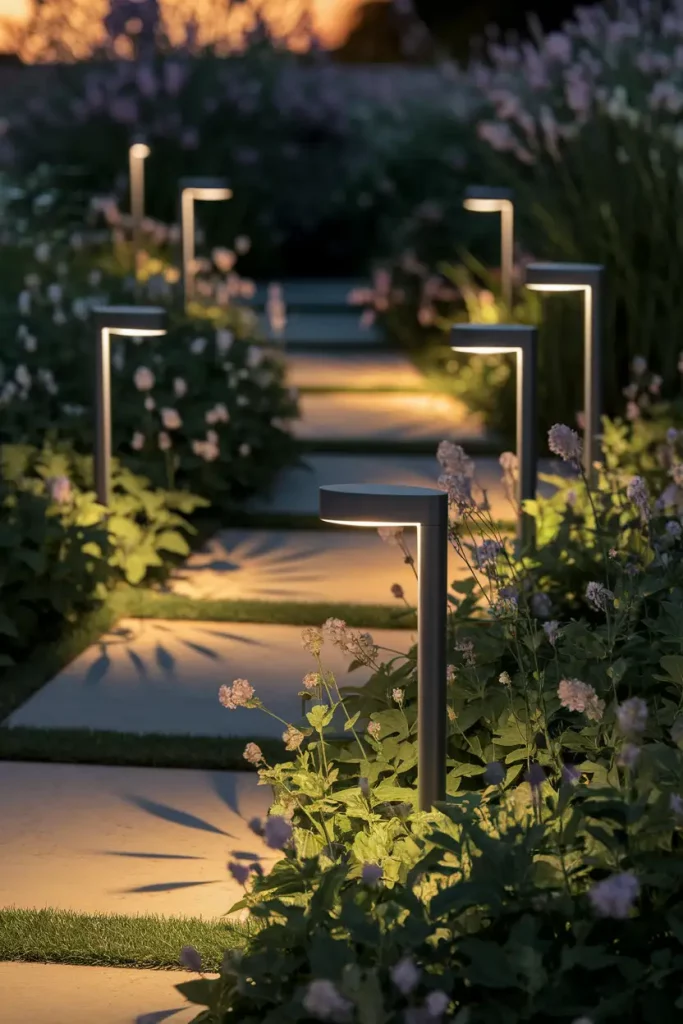
String solar lights or stake solar path lights to add ambiance without electrical work. They’re getting better and cheaper every year, and installation couldn’t be easier.
23. DIY Luminaries
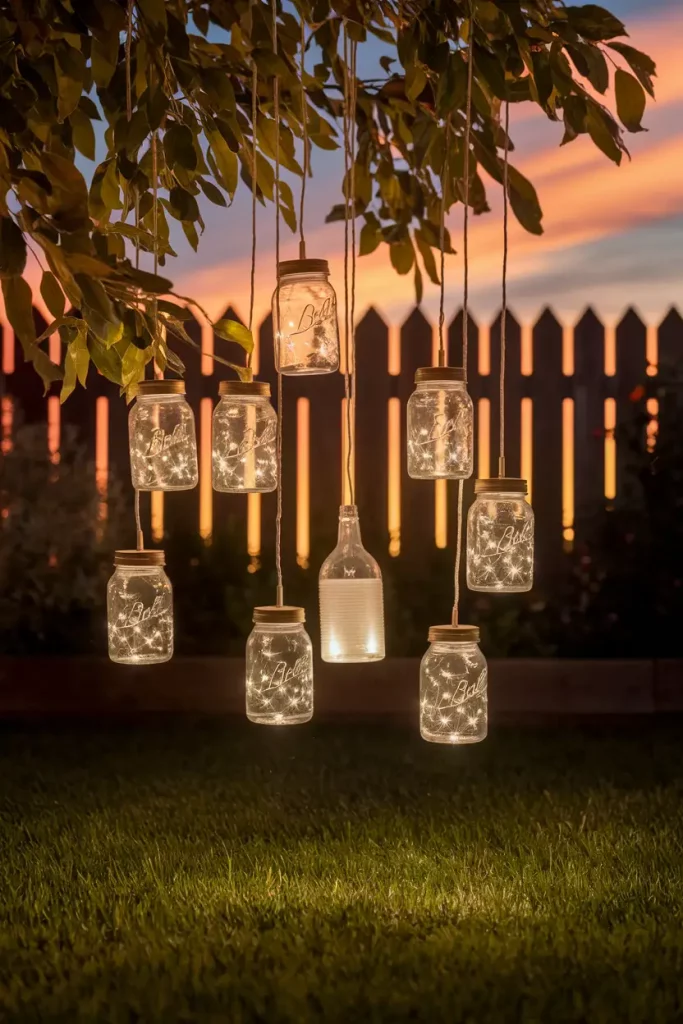
Mason jars, tin cans, or even plastic bottles can become outdoor lighting with battery-operated LED strings or solar lids. Hang them from branches or fence posts for magical evening ambiance.
Seasonal Interest
24. Four-Season Planting
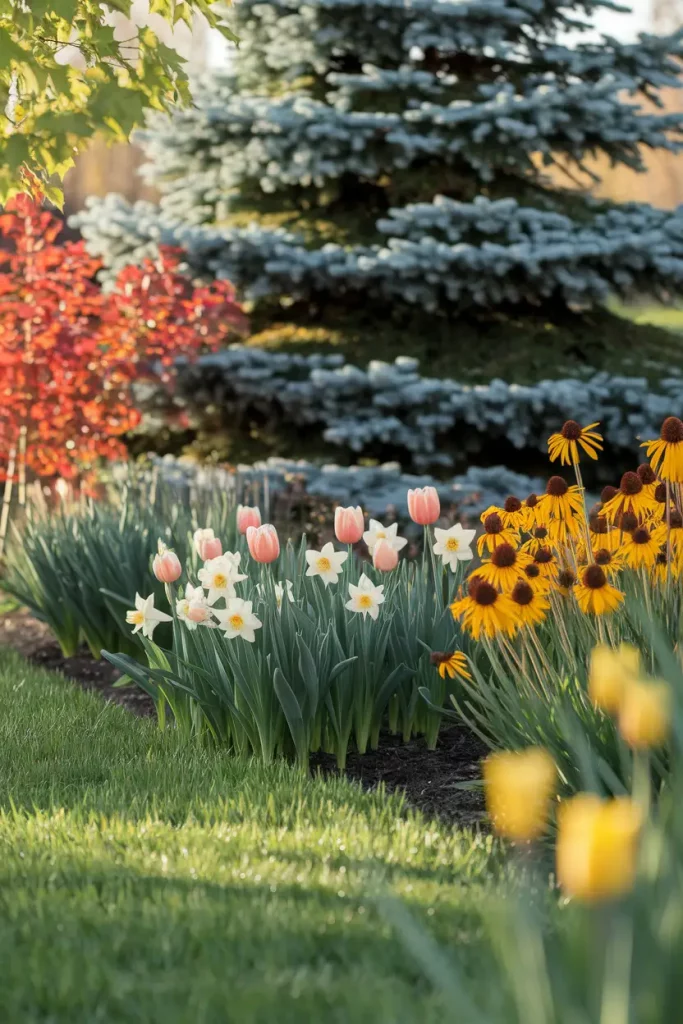
Choose plants that offer interest year-round. Evergreens for winter structure, spring bulbs for early color, summer perennials for continuous blooms, and deciduous shrubs with good fall color.
25. Seasonal Container Rotation
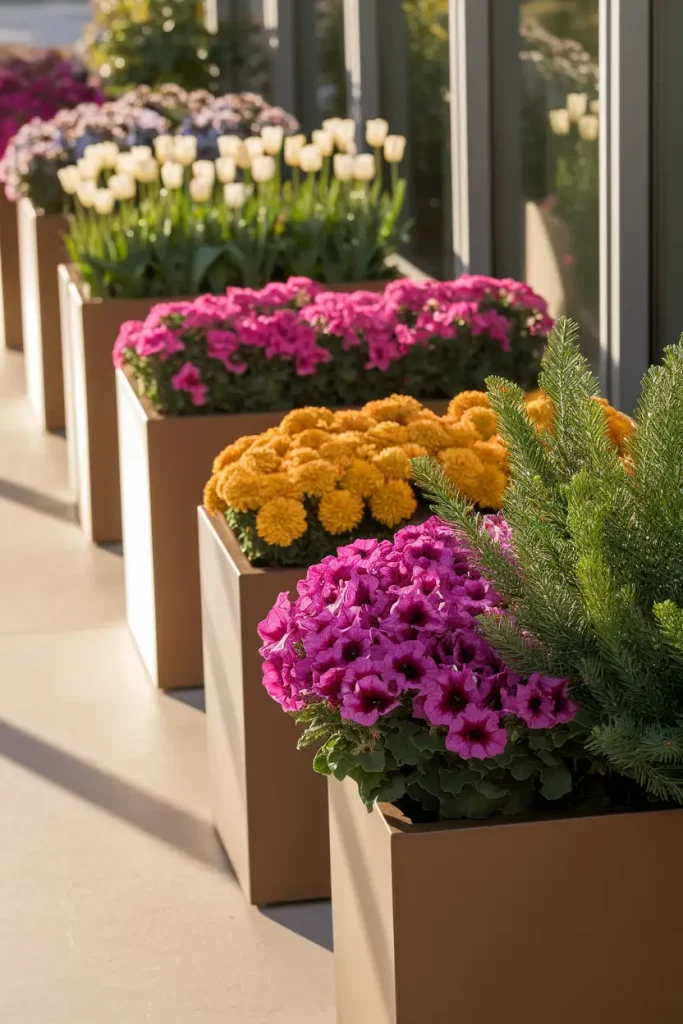
Use the same containers but change plantings seasonally. Spring bulbs give way to summer annuals, then fall mums, then winter evergreen arrangements. One set of containers, year-round interest.
Making It All Work Together
Start Small and Build
You don’t need to tackle all 25 ideas at once (and your wallet will thank you). Pick three projects that address your biggest concerns—maybe a pathway, some privacy screening, and a planting area. Master those, then add more elements over time.
Maintenance Matters
The cheapest landscaping in the world becomes expensive if it requires constant replacement. Choose plants and materials appropriate for your climate and maintenance level. A thriving $5 native plant beats a struggling $50 exotic specimen every time.
Work with Your Space
Your side yard isn’t trying to be your backyard or front yard—let it be its own thing. Embrace the narrowness with vertical elements. Use the privacy for bold experiments you might not try in more visible areas.
Common Mistakes to Avoid
Don’t overcrowd your narrow space—it’ll feel cluttered instead of full. Leave room for plants to mature and for yourself to move around comfortably.
Avoid the temptation to use your side yard as a dumping ground for leftover materials from other projects. That “temporary” pile of bricks will become permanent faster than you think.
Skip plants that need frequent watering unless you’re committed to the maintenance. A dead plant costs money regardless of how cheap it was initially.
Budget-Stretching Tips
Timing Is Everything
Shop end-of-season sales for plants and materials. That 75% off perennial might look rough in October, but it’ll come back strong next spring.
Network and Trade
Join local gardening groups on social media. People are constantly dividing perennials, pruning shrubs, and getting rid of surplus materials. One person’s yard waste is another person’s free landscaping supply.
Propagate Your Own
Learn basic propagation techniques. Many plants root easily from cuttings, and seeds cost pennies compared to established plants. I’ve filled entire garden beds with plants I propagated myself—it just takes patience.
Seasonal Planning Strategy
Spring: Foundation Work
Spring is perfect for major structural projects when the weather’s nice but plants aren’t actively growing. Install pathways, build raised beds, and prepare planting areas.
Summer: Planting and Establishment
Focus on getting plants established while they have warm soil and (hopefully) consistent water. This is also great timing for container projects and quick DIY builds.
Fall: Preparation and Planning
Fall planting often works better than spring for perennials and shrubs. Use fall to plan next year’s projects and take advantage of end-of-season sales.
Winter: Planning and Preparation
Use winter downtime to research plants, plan projects, and gather materials. Hit up post-holiday sales for containers and decorative elements.
Long-Term Value Creation
The best part about thoughtful side yard landscaping? It adds actual value to your property. Well-designed outdoor spaces, even small ones, contribute to overall property appeal and functionality.
More importantly, you create space that serves your family’s needs. Whether that’s a quiet retreat, functional storage, or just a pathway that doesn’t turn into a mud pit every time it rains, good side yard landscaping pays dividends daily.
Your Side Yard Success Story Starts Now
Look, I’m not going to pretend that transforming your side yard will change your life. But there’s something satisfying about taking a neglected space and making it work for you instead of against you. Plus, every time you walk past that transformed area, you’ll get a little boost knowing you made it happen without spending a fortune.
Your side yard has been waiting patiently for some attention. It’s time to stop walking past it and start working with it. Pick one project that excites you, grab your tools, and get started. That narrow strip of potential isn’t going anywhere—and neither is the satisfaction you’ll get from finally making it shine.
FYI, some of these projects might become gateways to bigger landscaping adventures. IMO, that’s not a bad problem to have 🙂

